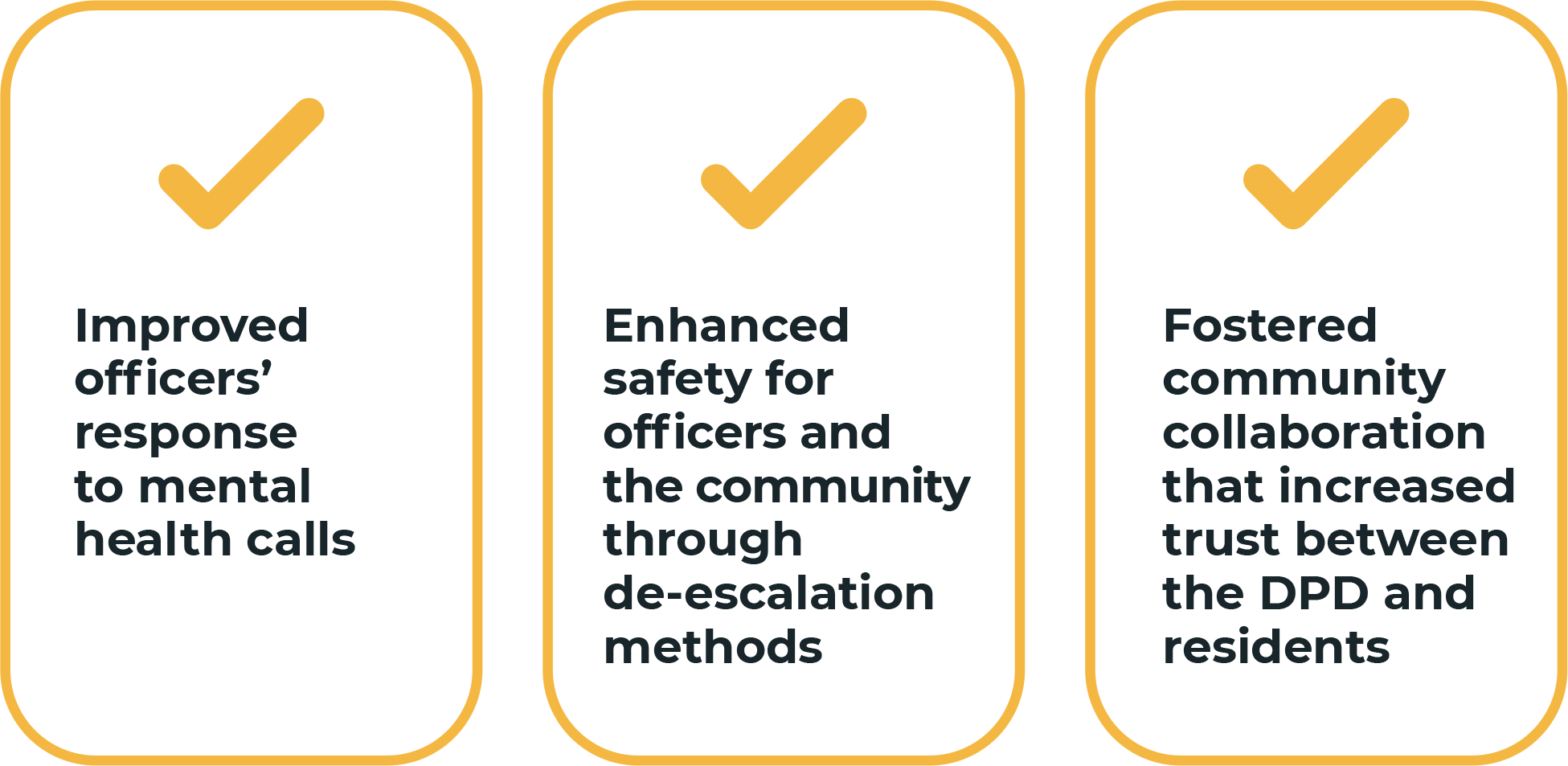Detroit has combined advanced technology with community partnerships, creating trackable progress, cutting crime up to 83%, shortening EMS response times and setting a national example with its Real-Time Crime Center. Detroit is defining a safe city.
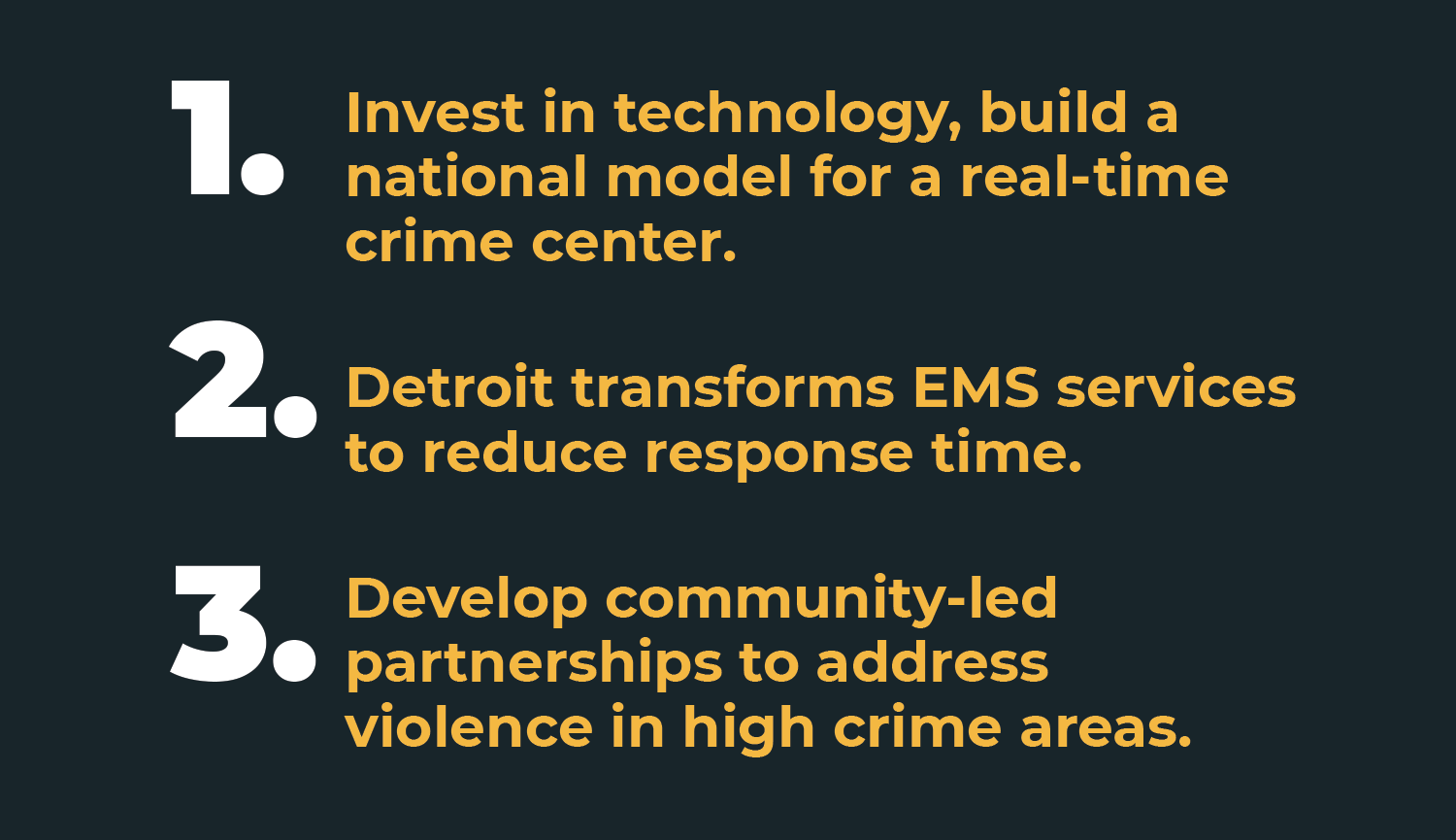
How Detroit Flipped the Script on Crime, Light, and Emergency Response
In 2013, emergency response took nearly half an hour. More than 40% (of 88,000) street lamps were out. Residents were wary and visitors only came to the city for the ruin porn tours.
Fast Forward to the summer of 2024. Detroit has become a national model for measurable crime reduction and is among the nation's fastest emergency responses.
Its transformation to a safer city required policy change focused on technology integration and community buy-in to sustain the gains. So how does a city go from living in the dark and virtually dead last in response time to safer communities and some of the fastest EMS services in the nation? Here is how Detroit turned things around.
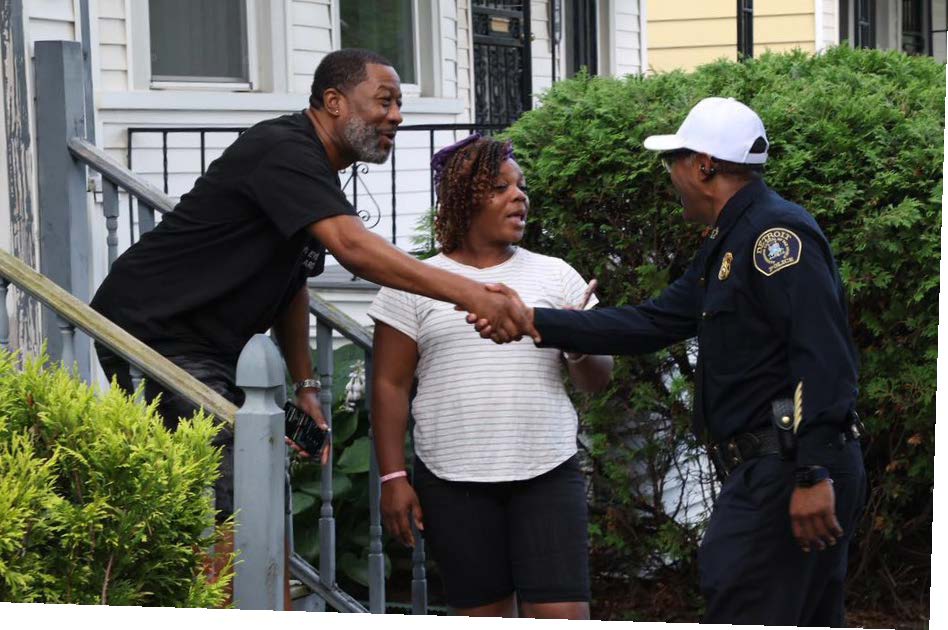
Detroit's Community-Led Approach to Gun Violence Stops the Cycle
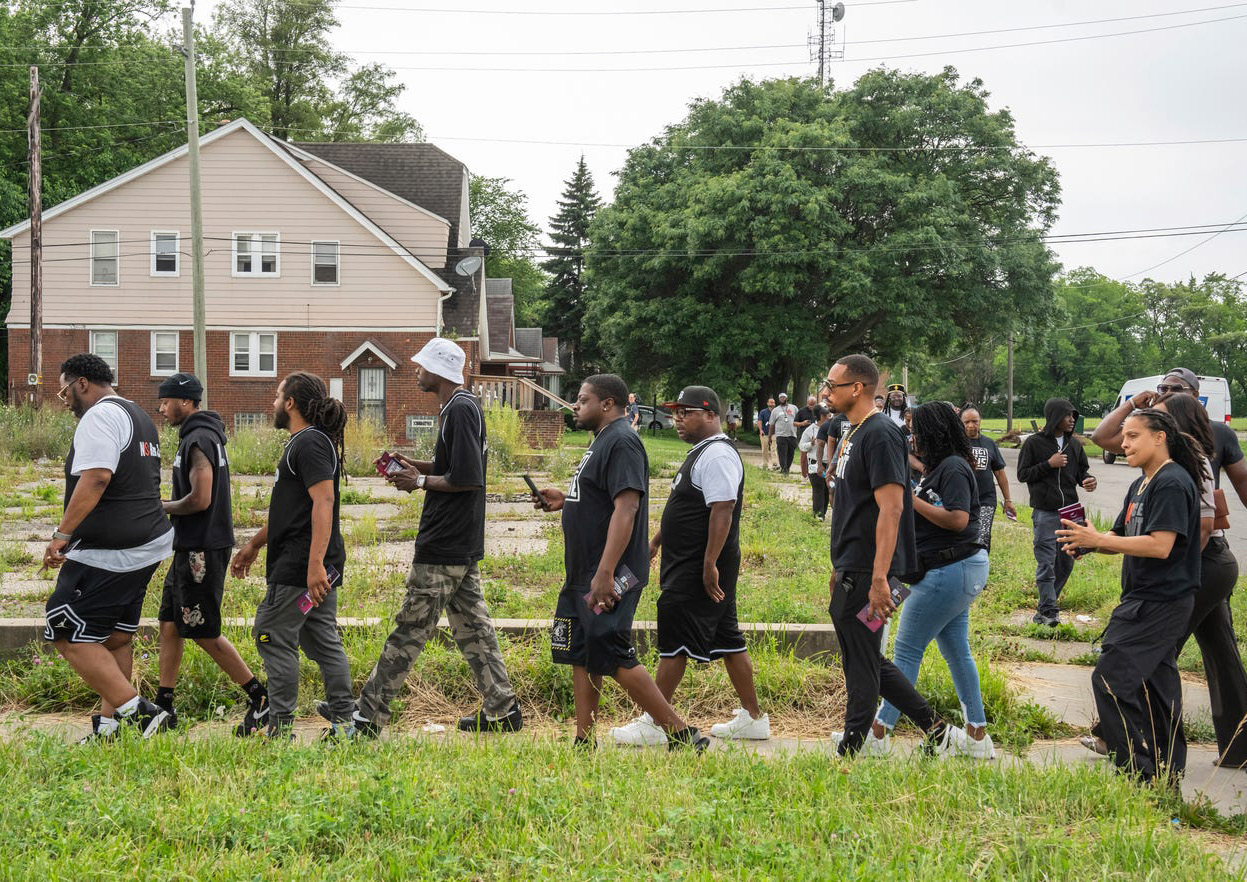
Detroit needed a targeted approach to reduce violence within the neighborhoods and to continue building alliances with the residents. In the summer of 2023, the DPD created the groundbreaking ShotStoppers initiative, a $10 million American Rescue Plan Act program that operates in six zones across Detroit. As part of the Shotstoppers initiative, six Community Violence Intervention(CVI) groups formed, focusing on intervening with high-risk individuals those already involved in violence—using data-driven approaches to identify hotspots and at-risk populations.
The CVI program relies on community partnership, emphasizing collaboration with local organizations, community leaders and residents to build trust and create a unified, supportive environment to address the root causes of violence.
Thanks, in part, to the CVI efforts, Detroit is also experiencing a decline in non-fatal shootings, which were cut in half from 2022 to 2024. Additionally, carjackings have dropped 71% since 2015.
| Category | 2023 | 2024 | % Change |
|---|---|---|---|
| Homicides | 252 | 203 | -19% |
| Nonfatal Shootings | 804 | 606 | -25% |
| Carjackings | 167 | 142 | -15% |
Community Violence Interrupters Becomes National Model
Crime drop from August to October 2024:
Detroit People's Community
(The People's Action)
- Trusted Community Presence
- Targeted Youth Engagement
- Prevention of nearly 50 homicides and 198 non-fatal shootings across Detroit CVI programs in 2024
Force Detroit
(Faithfully Organizing Resources for Community Empowerment)
- Utilizes former gang members or those directly impacted by violence—into the community
- Introduced Keepers, providing comprehensive mental health and nutrition for youth 13-26
- Partners with academics to evaluate and improve its CVI methods
Detroit Friends and Family
- Builds relationships with individuals in jails and youth detention centers
- Maintains real-time coordination with Detroit PD to quickly reach affected areas after shootings, aiming to prevent retaliatory violence within the critical first hour
- Work toward neighborhood blight removal
Wayne Metropolitan Community Action Agency
(Denby Neighborhood Alliance and Camp Restore)
- Coordinate cleanup projects—clearing vacant lots, repairing vacant homes, building raised gardens—led by residents and volunteers through Camp Restore
- Denby Alliance staff conduct proactive "radio patrols"
- They also deploy rapid response outreach after shootings to provide resources, prevent retaliation, and offer support to affected families
New Era Community Connection
- Created the Safe Zone app for suspicious activity reporting
- Repurposed blighted building as HQ and community hub
- Hosts regular community barbecues, safety meetings, and "mudroots" walking outreach to reinforce resident empowerment
Detroit 300
- Strong presence in local schools and churches, providing a stable and trusted environment for community members
- Collaborates closely with the Detroit Police Department, receiving immediate alerts about shootings within their designated zones
- Emphasizes direct intervention in potentially violent situations
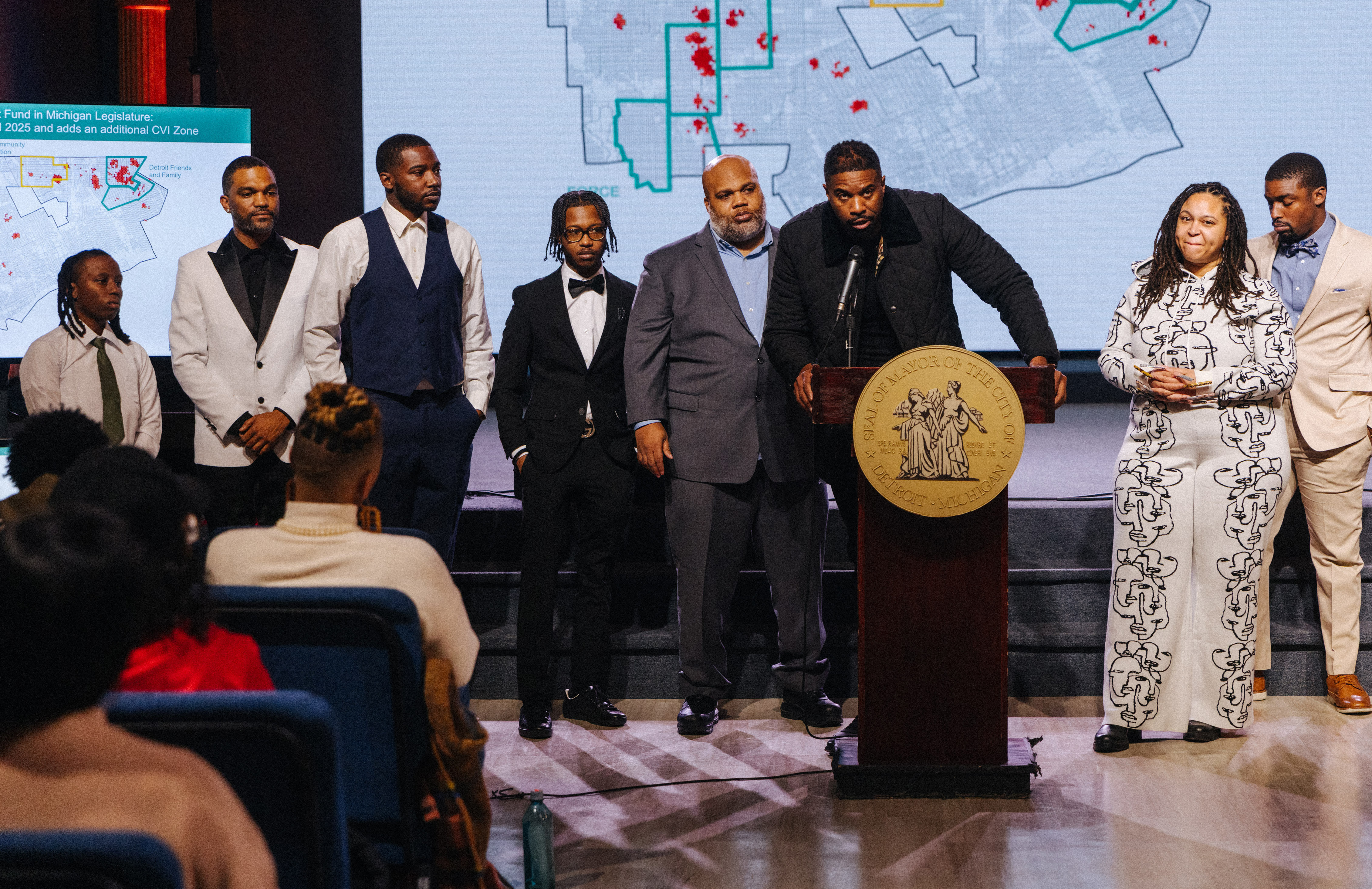
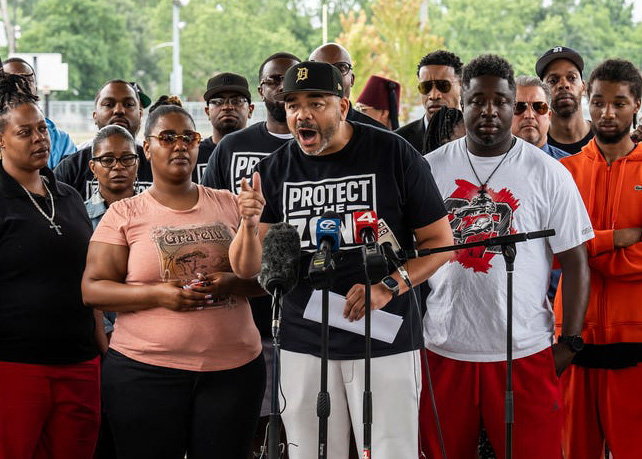
Part of the CVI success rests in their comprehensive services to at-risk residents, including access to education, employment opportunities, mental health services and other support resources to help individuals transition away from violent behavior and improve their quality of life.
CVI Program Results

Detroit Dollars Drive Crime Prevention and Resolution
| Date | Program | Money Invested |
|---|---|---|
| 2016 | Project Green Light | $8 million |
| 2021 | Real-Time Crime Center | $10 million |
| 2023 | Shotstoppers/CVIs | $10 million |
Detroit Invests in Technologies to Lower Crime Rates and Increase Safety
In 2016, Detroit launched its $10 million Real-Time Crime Center. Funded through municipal bonds, the high-tech center monitors and analyzes live surveillance footage from sources such as Project Green Light cameras.
The Project Green Light initiative involves businesses installing high-definition cameras, enhanced lighting and signage with a flashing green light to signal participation. These cameras are directly connected to the Detroit Police Department's (DPD) Real-Time Crime Center for live monitoring
Real-Time Crime Center Operations
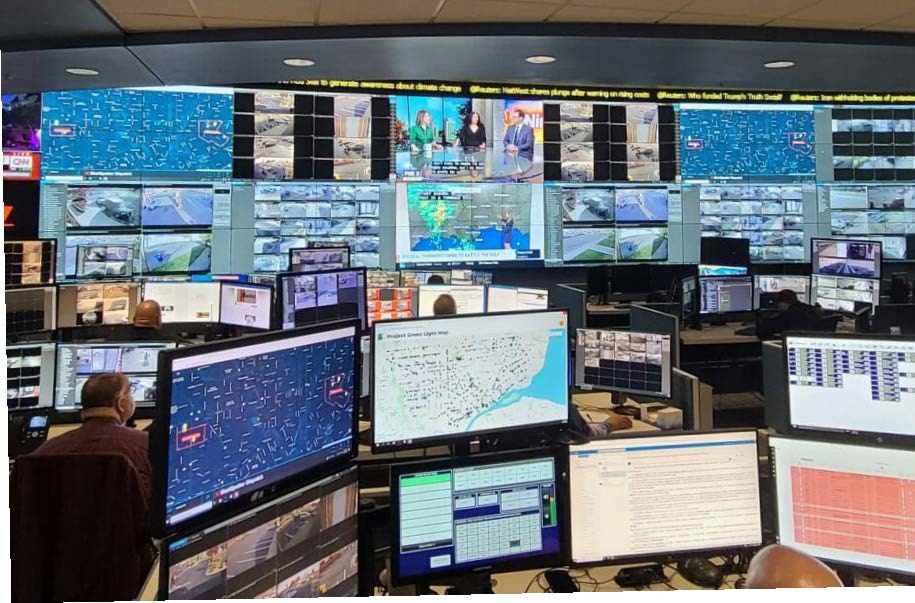
The Real-Time Crime Center employs 60 staff members, including crime analysts and intelligence specialists. It houses a 32-by-9-foot video wall for real-time monitoring. Detroit's ShotSpotter is an acoustic gunshot detection system deployed across select precincts to instantly identify and gunfire locations, enabling police to respond faster and more accurately to shooting incidents.
Also, the DPD turned its attention to the neighborhoods. Police officers needed to form meaningful relationships within Detroit's communities in order to build lasting change. These partnerships required visionary planning.
Rebuilding from Within: How Detroit Reshaped Emergency Response
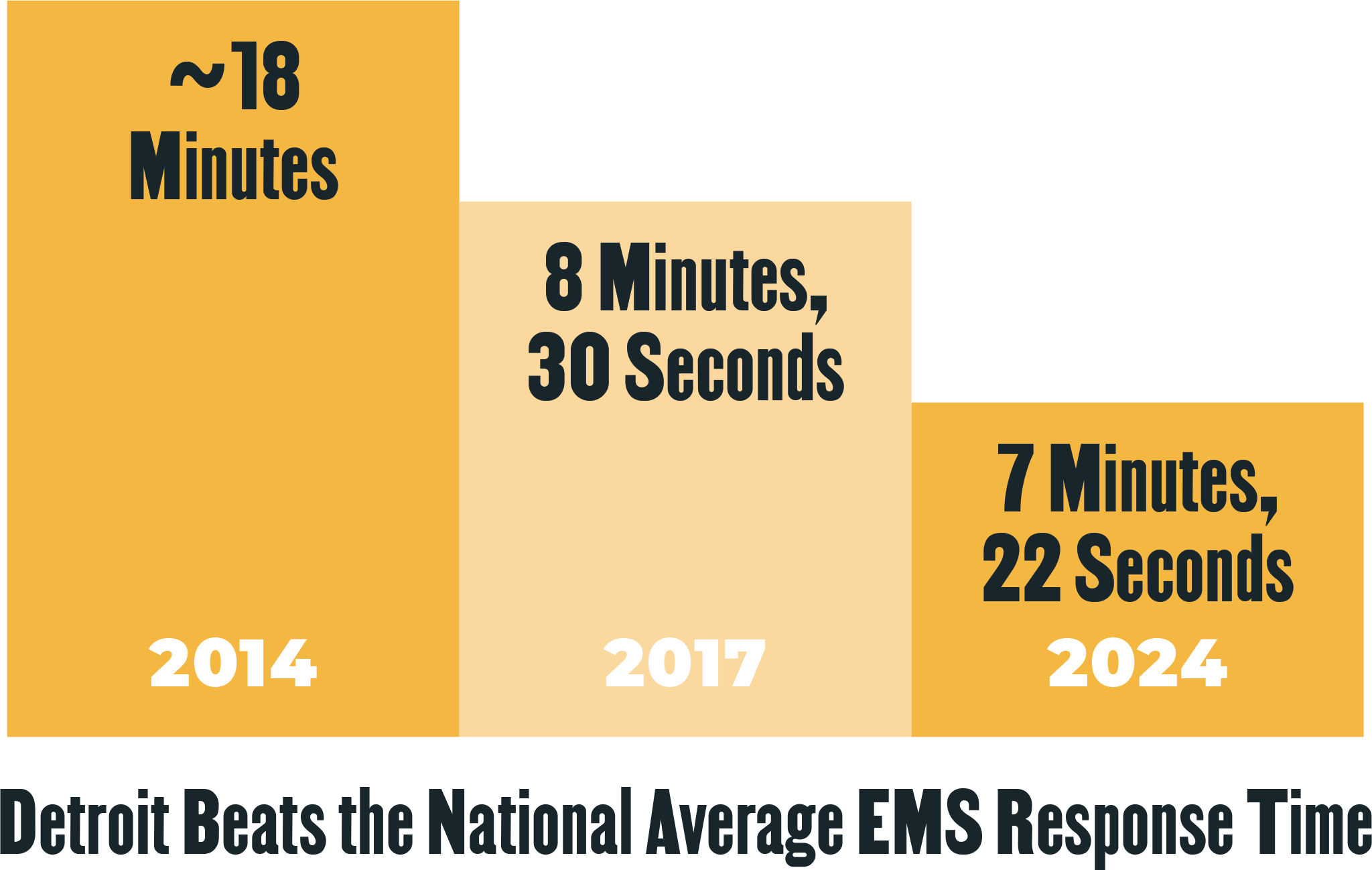
In 2014, Detroit’s Emergency Medical Services (EMS) response times for life-threatening calls averaged nearly 20 minutes. By 2024, after implementing a cross-training program for firefighters as Medical First Responders, this average decreased to 7 minutes, 22 seconds. The City of Detroit trained over 800 firefighters, enabling them to assist EMS crews and emergency calls.
In 2021, Mayor Mike Duggan, then Fire Commissioner Eric Jones and the Detroit Fire Fighters Association (DFFA) ratified a transformative five-year labor agreement covering 1,118 firefighters and EMTs.In July 2021, Mayor Mike Duggan, Fire Commissioner Eric Jones and the Detroit Fire Fighters Association (DFFA) ratified a transformative five-year labor agreement covering 1,118 firefighters and EMTs.
This blend of policy, compensation, training and leadership elevated Detroit's emergency response—establishing the city as a national model for rapid, efficient public safety services.
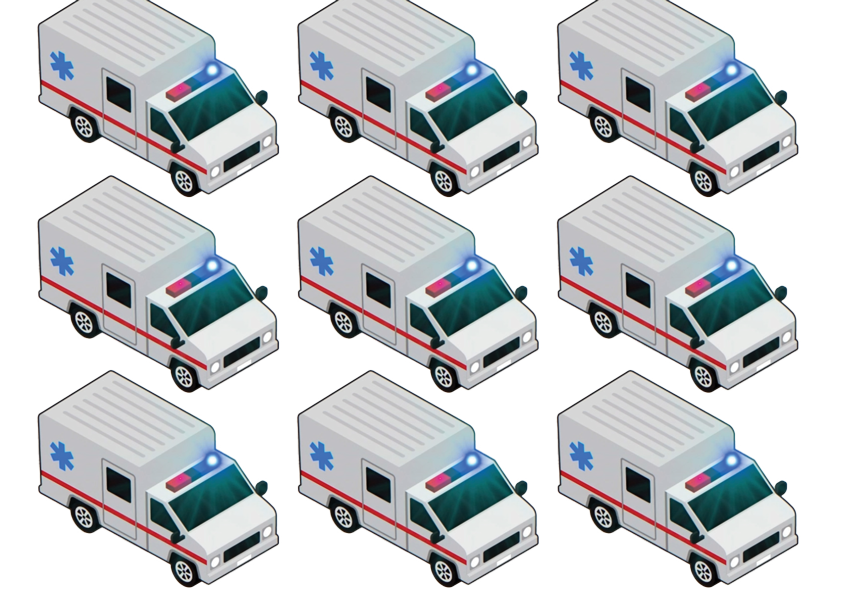
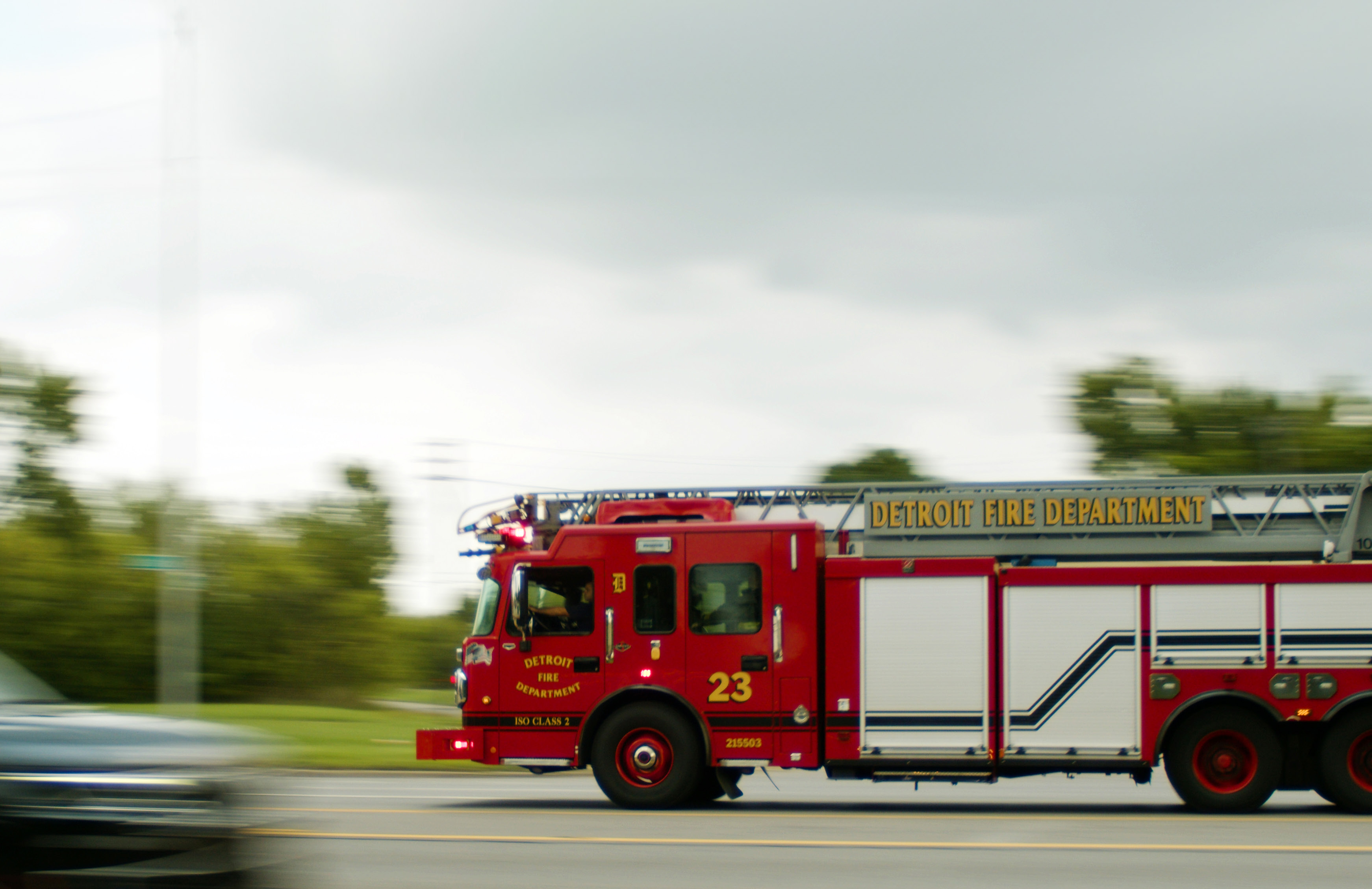
HEARTsafe Community Designation
In 2024, working with SaveMiHeart, Detroit was designated as a HEARTsafe community. HEARTsafe is a national preparedness program and the designation is awarded to cities demonstrating extreme preparedness in the areas of cardiac emergencies, training, preparation and response protocols. Detroit has over 500 Automated External Defibrillators registered on their Pulsepoint App. The Detroit Fire Department has also trained hundreds of city employees in hands-only CPR.

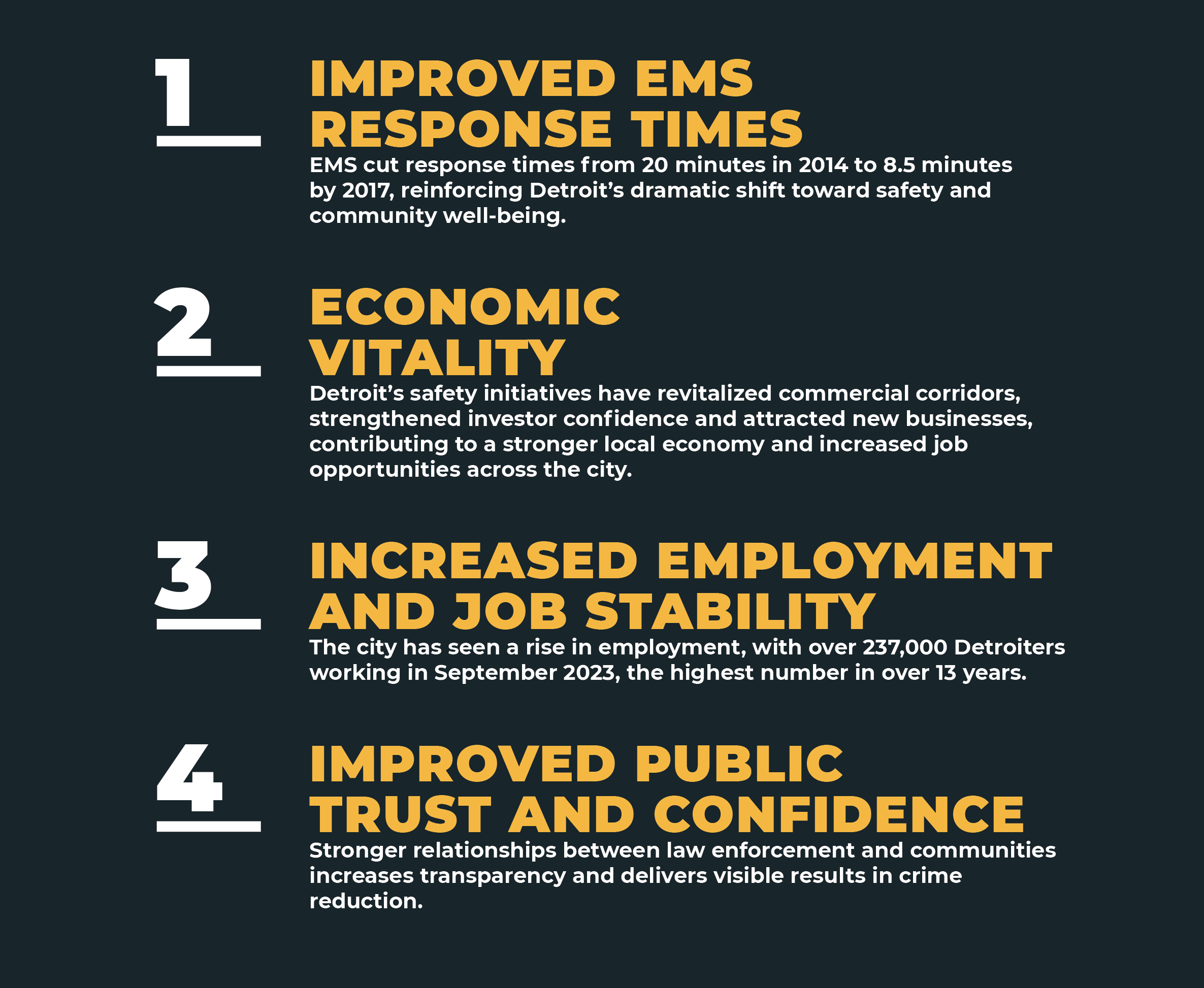
'Mental Health Crisis' Officer Training
In pursuit of balanced, calming response and crisis de-escalation training, the Detroit-Wayne Crisis Intervention Team (CIT) partnered with the DPD on community wellness education, crisis resolution, de-escalation techniques and connecting individuals to community-based services.
Crisis Intervention Team by the Numbers
The team—wearing bespoke uniforms signifying their distinction from the DPD police force uses mobile crisis service vans to provide therapeutic behavioral health support, which assist the police, 911 dispatchers and homeless outreach workers when responding to mental health calls.
